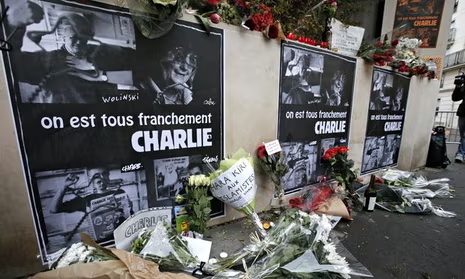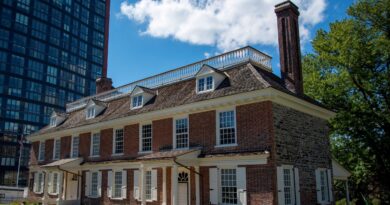Mass Shooting at Charlie Hebdo Offices in Paris France
Founded in 1970, Charlie Hebdo emerged as a fiercely independent voice in French satire, combining political cartoons, irreverent commentary, and sharp critiques of power. Over decades, the magazine courted controversy with its unflinching depictions of political leaders, religious figures, and social norms. Its editorial stance championed free speech and secularism—a cornerstone of the French concept of laïcité—while embracing a provocateur’s role in challenging taboos. By the 2000s, Charlie Hebdo had weathered lawsuits, protests, and even a firebombing of its offices in 2011, but it remained undeterred in its mission to lampoon all forms of authority.
Rising Tensions and Threats
In the years preceding 2015, the magazine’s depictions of the Prophet Muhammad drew particular ire from Islamist groups. Following publication of controversial cartoons in 2006 and again in 2012, Charlie Hebdo received death threats and faced security alarms. Police protection was intermittently assigned to key staff members. Classified documents later revealed that French intelligence monitored individuals believed to be planning attacks. Yet, resources also shifted toward broader counterterrorism after the surge of foreign fighters traveling to conflicts in Iraq and Syria. This environment of simmering hostility set the stage for a violent climax.
The Morning of January 7, 2015
At approximately 11:30 am on Wednesday, January 7, 2015, a winter chill blanketed Paris. Inside Charlie Hebdo’s modest offices at 10 Rue Nicolas‑Appert in the 11th arrondissement, the editorial team gathered for their weekly meeting. Present were editor-in-chief Stéphane “Charb” Charbonnier, veteran cartoonists Jean “Cabu” Cabut and Georges “Wolinski” Wolinski, along with Bernard “Tignous” Verlhac, Philippe “Honoré” Honoré, and others preparing the next issue under the rallying headline “Tout est pardonné” (“All Is Forgiven”).
Inside the Newsroom
The cramped newsroom was abuzz with creative energy, coffee cups clinking and laughter punctuating conversation. Staff and guests—ranging from columnists to copy editors—traded ideas for cartoons and headlines. Security, though present in the form of a gate code and occasional police detail outside, felt distant to those immersed in the daily bustle. The sense of invulnerability among journalists, accustomed to heated exchanges but unprepared for lethal violence, would be shattered within moments.
The Attack Unfolds
Two gunmen, clad in black and armed with military-style rifles, stormed past the reception area after overpowering and executing a security guard. They barked in French and Arabic, demanding the newsroom door code before battering it down. In under two minutes, the shooters executed targets by name: Charb, Cabu, Wolinski, Tignous, and Honoré fell first, followed by economic columnist Bernard Maris, psychoanalyst Elsa Cayat, copy editor Mustapha Ourrad, and guest Michel Renaud. Police officer Franck Brinsolaro, present to protect Charb, died in the crossfire. As the assailants fled, they gunned down patrolman Ahmed Merabet on the street, killing him at point-blank range. Eleven others sustained injuries.
The Victims
Charlie Hebdo’s reputation rested on its bold satire, and its creative team embodied that spirit. Eight of the twelve people killed on January 7, 2015, were cartoonists, columnists, and editors whose work challenged authority and defended free expression:
- Jean “Cabu” Cabut, 76 – A legendary figure in French cartooning, Cabu co‑founded Hara Kiri in 1960 and later drew for Charlie Hebdo, famed for his sharp political caricatures and his weekly strip “Les Ritals.”
- Stéphane “Charb” Charbonnier, 47 – As Charlie Hebdo’s editor‑in‑chief and lead cartoonist, Charb steered the magazine’s editorial line, championing laïcité and the right to offend. His final cover, “Tout est pardonné,” epitomized his defiance.
- Philippe “Honoré” Honoré, 73 – With a career spanning decades at Le Nouvel Observateur and Charlie Hebdo, Honoré was known for his minimalist yet scathing visual commentary on politics and society.
- Bernard “Tignous” Verlhac, 57 – Tignous’s playful yet piercing cartoons graced Charlie Hebdo and publications like L’Événement du Jeudi. He was beloved for his empathy and wit in tackling social issues.
- Georges Wolinski, 80 – One of France’s most influential satirists, Wolinski’s work appeared in Lui, Le Monde, and Charlie Hebdo. His cartoons combined humor and humanity, reflecting a lifelong commitment to free speech.
- Elsa Cayat, 54 – A clinical psychoanalyst and columnist, Cayat addressed mental‑health topics and social taboos in her weekly pieces, making her the only woman among the victims.
- Bernard Maris, 68 – An economist and Charlie Hebdo editorialist writing under the pseudonym “Oncle Bernard,” Maris was a professor at Toulouse University who demystified economic policy for readers.
- Mustapha Ourrad, 60 – As a copy editor, Ourrad meticulously prepared text and images for publication. Of Algerian origin, he embodied the magazine’s multicultural ethos. Wikipedia
Other Victims
The remaining four victims were staff and guests whose presence in the newsroom or just outside its doors cost them their lives:
- Frédéric Boisseau, 42 – A building maintenance worker for Sodexo, Boisseau was the first to fall, shot in the lobby as he arrived on a service call.
- Franck Brinsolaro, 49 – Assigned as a protection officer for Charb, Brinsolaro was killed shielding the editor during the gunmen’s rush into the meeting.
- Ahmed Merabet, 42 – A patrol officer, Merabet confronted the attackers outside the office and was executed at close range on the street.
- Michel Renaud, 69 – A guest at the editorial meeting, Renaud was a respected travel writer and festival organizer visiting the office to discuss a project. Wikipedia
Together, these twelve individuals represented the diverse talents and convictions that have made Charlie Hebdo a symbol of audacious satire. Their deaths sparked global solidarity under the slogan “Je suis Charlie,” and their legacies continue to inspire debates about the power—and the risks—of free expression.
The Perpetrators
The attackers were later identified as brothers Chérif and Saïd Kouachi, French nationals with documented links to Al‑Qaeda in the Arabian Peninsula (AQAP). Chérif, previously incarcerated for attempting to join jihadist forces in Iraq, had trained in Yemen. Their motive—publicly proclaimed in a taped message—was vengeance for perceived blasphemy against Islam. While the Kouachis sought to escape the city, they left a trail of evidence including jihadist flags, identification documents, and Molotov cocktails in abandoned vehicles.
Manhunt and Siege at Dammartin‑en‑Goële
A nationwide manhunt mobilized thousands of security personnel. On January 9, intelligence pinpointed the brothers at a printing plant in the village of Dammartin‑en‑Goële, northeast of Paris. Surrounding the facility, police initiated a standoff that lasted several hours. Inside, the Kouachis held the plant’s owner hostage, communicating sporadically with negotiators. Shortly before dusk, special-forces units stormed the building, killing both brothers in a coordinated assault that ended the first phase of the crisis.
Related Attack in Montrouge and Kosher Supermarket Siege
Parallel to the Kouachis’ actions, Amedy Coulibaly—an associate who pledged allegiance to the Islamic State—shooting of unarmed trainee police officer Clarissa Jean‑Philippe in Montrouge on January 8 underscored a coordinated campaign of terror. Later that day, Coulibaly took hostages at a kosher grocery in Porte de Vincennes, killing four Jewish customers. He declared solidarity with the Kouachi brothers and threatened further carnage before French commandos neutralized him on January 9, ending the three-day spree.
National and Global Response
The attacks stunned France and reverberated worldwide. Within days, over 1.5 million people marched in Paris’s “March for the Republic,” joined by an estimated 3.7 million across other French cities. Political leaders, from President François Hollande to global counterparts, echoed the rallying cry “Je suis Charlie”—a declaration of solidarity that quickly spread on social media. Vigils, demonstrations, and editorial tributes proliferated, underscoring a collective defense of free expression against violent intimidation.
Solidarity Movements and Cultural Impact
Beyond mass rallies, the phrase “Je suis Charlie” inspired artworks, concerts, and international campaigns promoting tolerance and dialogue. Universities held symposiums on freedom of speech, while publishers and media outlets reprinted Charlie Hebdo cartoons in acts of defiance. The cultural conversation expanded to examine the limits of satire, the role of blasphemy laws, and the balance between protecting religious sensibilities and upholding democratic values.
Legal Proceedings and Trials
In the wake of the attacks, French authorities fast-tracked investigations into individuals who allegedly facilitated the assailants. By 2020, a Paris court tried seventeen defendants on charges including complicity in terrorist murder. Verdicts ranged from lengthy prison sentences to acquittals for those whose connections proved tenuous. The trials reopened wounds as survivors and families recounted trauma, while legal scholars debated the adequacy of France’s anti-terror legislation and surveillance practices.
Security Reforms and Counterterrorism Measures
Security forces overhauled threat-assessment protocols and expanded resources for monitoring radicalized individuals. The French government bolstered police presence at potential targets—media offices, houses of worship, schools—and invested in intelligence-sharing agreements with European and global partners. Legislative changes tightened procedures for passport issuance and border controls, though critics warned of civil-liberties infringements. The state of emergency declared after subsequent attacks in 2015 laid the groundwork for permanent anti-terrorism laws.
Impact on Journalism and Media Practices
Newsrooms worldwide assessed their vulnerability, adopting comprehensive security protocols for staff and premises. Media organizations formed alliances to share best practices on crisis management and digital-security safeguards. The tragedy catalyzed broader discussions on the ethics of publishing provocative content, the responsibilities of journalists in conflict zones, and strategies for resisting censorship without provoking violence.
Memorials, Commemorations, and Legacy
Every January 7 since 2015, gatherings in Paris honor the victims at Rue Nicolas‑Appert, where bouquets rest against the building’s façade. Documentary films, books, and exhibitions chronicle both the human cost and the defiant spirit that emerged. Educational programs use the events as case studies in countering violent extremism and fostering intercultural understanding. For many, Charlie Hebdo symbolizes not only a grim atrocity but also a reaffirmation of democracy’s core principles.
Ongoing Debates and Future Challenges
A decade on, the Charlie Hebdo shooting continues to provoke complex questions: How should societies confront hate speech without yielding to violence? What balance ensures security without eroding fundamental freedoms? As digital platforms amplify extremist rhetoric, and as new generations grapple with multiculturalism, the tensions spotlighted in 2015 remain pressing. The magazine itself persists, its pages blending satire and solemn reflection, a testament to resilience in the face of terror.
Discover more from City Towner
Subscribe to get the latest posts sent to your email.




